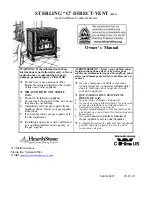
40
Recommended Range
BFITW
Model
Delta 20 °F
Delta 25 °F
Delta 30 °F
Delta 35 °F
Delta 40 °F
Delta 45 °F
Delta 50 °F
Delta 55 °F
GPM
Head
Loss
(ft)
GPM
Head
Loss
(ft)
GPM
Head
Loss
(ft)
GPM
Head
Loss
(ft)
GPM
Head
Loss
(ft)
GPM
Head
Loss
(ft)
GPM
Head
Loss
(ft)
GPM
Head
Loss
(ft)
1000
98
11.3
78
8
65
6
56
4.7
49
3.8
44
3.1
39
2.7
36
2.3
1250
123 16.1
98
11.3
82
8.5
70
6.6
61
5.4
54
4.5
49
3.8
45
3.3
1500
147 15.6 118 10.9
98
8.2
84
6.4
74
5.2
65
4.3
59
3.7
53
3.1
2000
196 20.1 157 14.2 131 10.6 112
8.4
98
6.8
87
5.6
78
4.8
71
4.1
Required Flow = Output×1000/(500×ΔT), where flow rate is in GPM, output is in MBH, and ΔT is in 0
F, Outputs are
This water heater has a temperature rise limit of 55 °F
Figure 13: Heat exchanger water
pressure loss
. Water Piping
(continued)
F. Temperature Rise and Heat Exchanger Head Loss
1.
The BFIT heat exchanger adds pressure drop to the system which must be accounted for in the design of the
piping configuration and pump selection.
2. The system should be designed to maintain the operating water flow rate shown in Table 23
while never
exceeding the range of absolute flow rates shown in Table 24. Exceeding the maximum water flow rates can
cause pipe erosion, damage the flow switch, and allow unsafe operation.
a.
Maintaining sufficient flow through the heat exchanger will help prevent the buildup of scale.
Table 25: Temperature rise, flow rate, and head loss
200
300
400
50
150
250
350
6.7
13.35
10
20
16.7
0
100
3.35
Water Flow Rate (gal/min)
2000 MBtu/h
3000 MBtu/h
4000 MBtu/h
1500 MBtu/h
1250 MBtu/h
















































